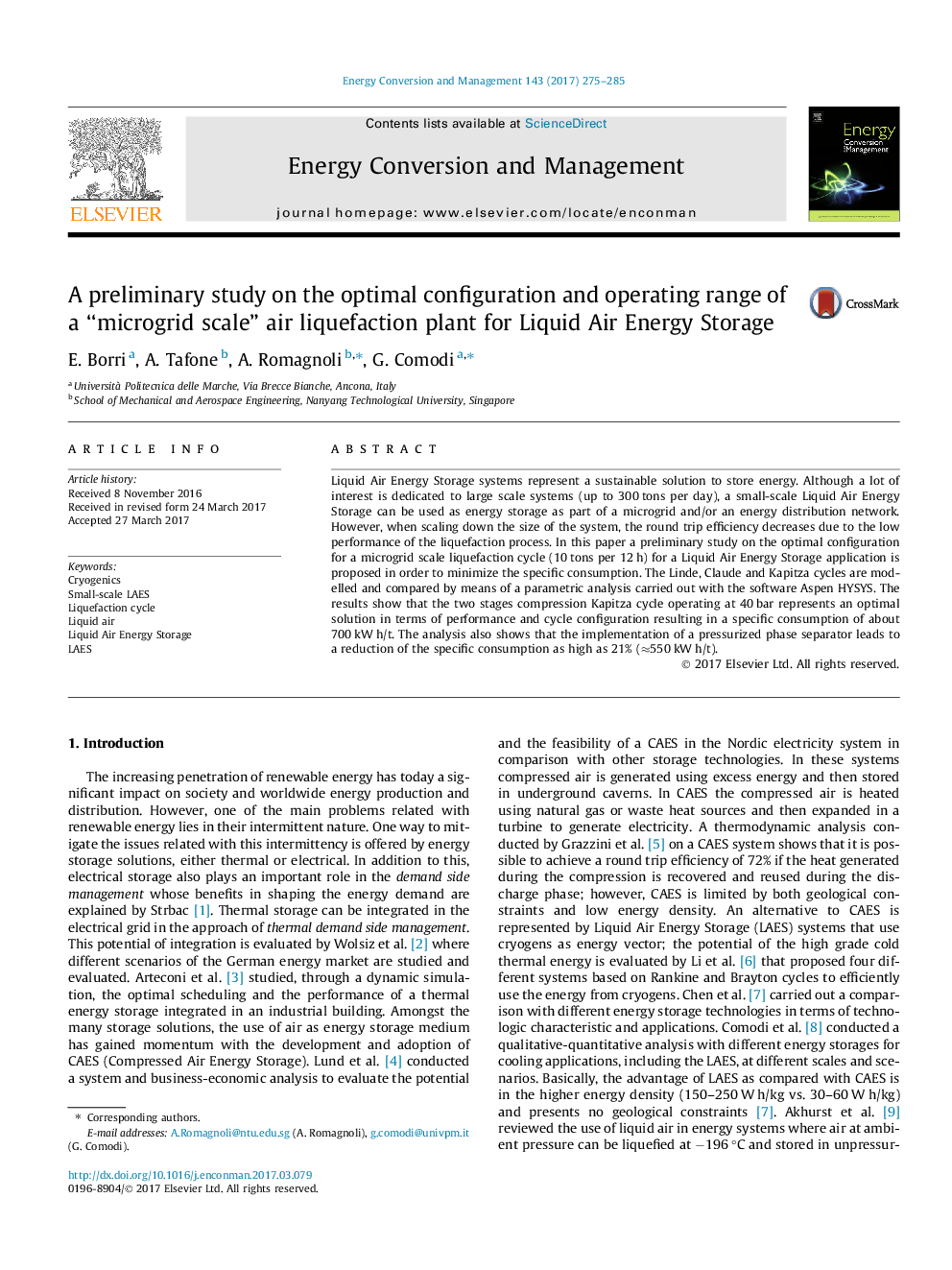| Article ID | Journal | Published Year | Pages | File Type |
|---|---|---|---|---|
| 5012797 | Energy Conversion and Management | 2017 | 11 Pages |
Abstract
Liquid Air Energy Storage systems represent a sustainable solution to store energy. Although a lot of interest is dedicated to large scale systems (up to 300Â tons per day), a small-scale Liquid Air Energy Storage can be used as energy storage as part of a microgrid and/or an energy distribution network. However, when scaling down the size of the system, the round trip efficiency decreases due to the low performance of the liquefaction process. In this paper a preliminary study on the optimal configuration for a microgrid scale liquefaction cycle (10Â tons per 12Â h) for a Liquid Air Energy Storage application is proposed in order to minimize the specific consumption. The Linde, Claude and Kapitza cycles are modelled and compared by means of a parametric analysis carried out with the software Aspen HYSYS. The results show that the two stages compression Kapitza cycle operating at 40Â bar represents an optimal solution in terms of performance and cycle configuration resulting in a specific consumption of about 700Â kWÂ h/t. The analysis also shows that the implementation of a pressurized phase separator leads to a reduction of the specific consumption as high as 21% (â550Â kWÂ h/t).
Related Topics
Physical Sciences and Engineering
Energy
Energy (General)
Authors
E. Borri, A. Tafone, A. Romagnoli, G. Comodi,
